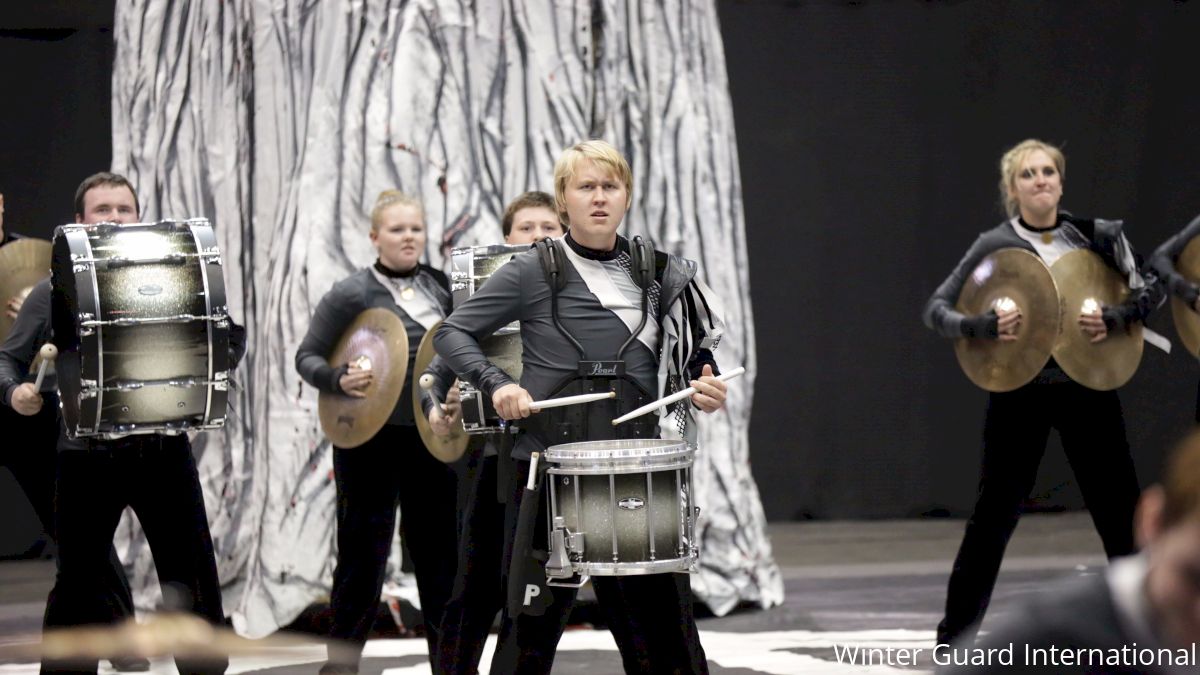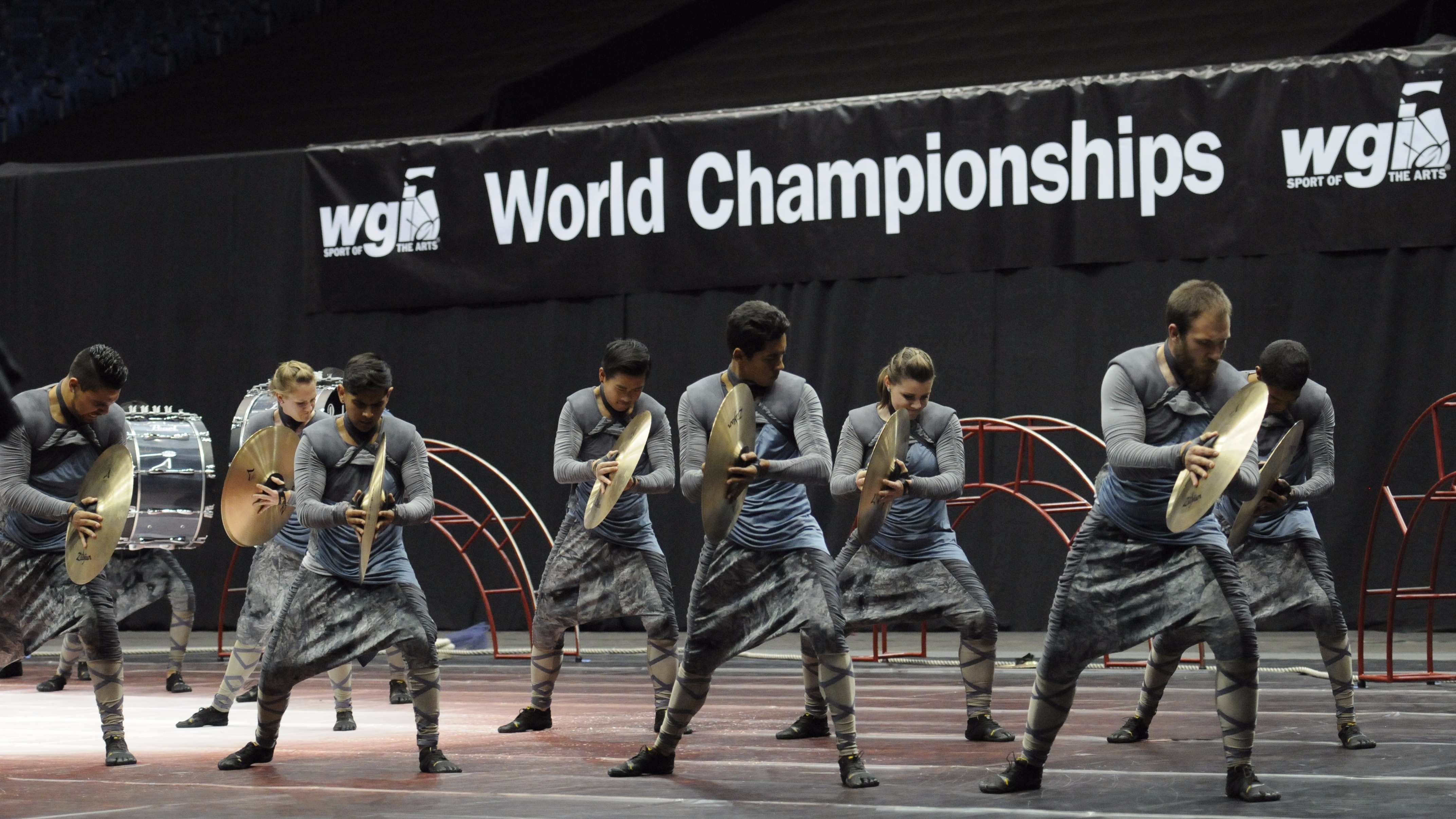WGIFeb 6, 2017 by Michael Gilley
Gambling On Props: Weighing The Risks vs. Rewards For Your Indoor Show
Gambling On Props: Weighing The Risks vs. Rewards For Your Indoor Show
Props have the ability to add so much character and possibilities to your WGI indoor show. They can also add big headaches.

From professional-quality LED screens to homemade mountains, a growing number of Winter Guard International percussion groups are leaning on larger-than-life props during their shows alongside their music and visual designs.
When the WGI season kicks off this weekend at the WGI Troy Regional in Troy, Michigan, the stage is set for even more boundary-pushing productions to use props to sell their storylines.
Coming off its successful 2015 season, Clear Brook High School from Friendswood, Texas, knew it had to go big or go home this past year. So, the guard built a cave. For its production titled "Descent," the group created a working rock wall for its performers to climb. The show also featured boulders that, when rolled, mimicked a cave collapse.
According to the WGI handbooks (Guard, Percussion, Winds), there is no limitation on the size of props, other than that they be able to fit through doorways and the tunnel leading to the competition area. If a prop is too large to fit, no exceptions are made for timing penalties. Working together, the group successfully learned to construct and dismantle the rock face.

Scholastic World Class group Ayala High School, from Ayala, California, enhanced its show, "Igor's Riot," via the use of LED screens that alternated images of Igor Stravinsky with vivid colors. The eerie yet mesmerizing production hypnotized audiences with its nuances and rotating forms.
To be legal in competition, all visual projections must be controlled by members on the competition floor. No one outside the boundary line is allowed to operate or cue electronic images. These students timed it perfectly, as each visual aid lined up with a change in mood or musical impact.
Pulse Percussion of Westminster, California, also proved that bigger is better. To create the scenery for its 2016 show, "Brother," the group designed and built a replica of an orphanage. Beds, mattresses, and functional doors were set up to resemble a bedroom.
These props, which were all in drab grays and browns, added to the bleak feeling of being alone. While beds are not easy to move, the group was successful in moving them around the performance area. Heavy props must be able to be carried or wheeled off the floor for groups to avoid a penalty. To avoid damage, nothing may be dragged across the competition floor. Groups found in violation of this rule are also subject to penalties.

RCC Performs at the 2016 WGI World Championships. Note their props which they used throughout the show in the background.
The most overlooked yet important prop rule is to take all equipment off the floor at the end of each production. Regardless of the size or number, no confetti, sticks, or other substances are allowed to be left after a performance.
Taking a risk, Matrix Percussion used paint in its entertaining 2013 show, "Covered." Utilizing paint is a dangerous move, as there is a high chance that some will remain on the floor and collect a penalty. Despite this potential liability, Matrix defied the odds and escaped penalty free, placing fourth in the championship finals.
The upcoming marching percussion series is bound to impress with ever-changing musicality and digital visual aids. In keeping up with modern trends, WGI has updated its handbook to include hoverboards as prohibited items. However, the organization does allow for motorized mobility devices for disabled performers. Also on this list of contraband are fireworks, smoke machines, live animals, drones, and breakable glass objects. Although these items may add entertainment value, WGI ensures the safety of both performers and spectators by prohibiting these from use in competition.
When the WGI season kicks off this weekend at the WGI Troy Regional in Troy, Michigan, the stage is set for even more boundary-pushing productions to use props to sell their storylines.
Coming off its successful 2015 season, Clear Brook High School from Friendswood, Texas, knew it had to go big or go home this past year. So, the guard built a cave. For its production titled "Descent," the group created a working rock wall for its performers to climb. The show also featured boulders that, when rolled, mimicked a cave collapse.
According to the WGI handbooks (Guard, Percussion, Winds), there is no limitation on the size of props, other than that they be able to fit through doorways and the tunnel leading to the competition area. If a prop is too large to fit, no exceptions are made for timing penalties. Working together, the group successfully learned to construct and dismantle the rock face.

Scholastic World Class group Ayala High School, from Ayala, California, enhanced its show, "Igor's Riot," via the use of LED screens that alternated images of Igor Stravinsky with vivid colors. The eerie yet mesmerizing production hypnotized audiences with its nuances and rotating forms.
To be legal in competition, all visual projections must be controlled by members on the competition floor. No one outside the boundary line is allowed to operate or cue electronic images. These students timed it perfectly, as each visual aid lined up with a change in mood or musical impact.
Pulse Percussion of Westminster, California, also proved that bigger is better. To create the scenery for its 2016 show, "Brother," the group designed and built a replica of an orphanage. Beds, mattresses, and functional doors were set up to resemble a bedroom.
These props, which were all in drab grays and browns, added to the bleak feeling of being alone. While beds are not easy to move, the group was successful in moving them around the performance area. Heavy props must be able to be carried or wheeled off the floor for groups to avoid a penalty. To avoid damage, nothing may be dragged across the competition floor. Groups found in violation of this rule are also subject to penalties.

RCC Performs at the 2016 WGI World Championships. Note their props which they used throughout the show in the background.
The most overlooked yet important prop rule is to take all equipment off the floor at the end of each production. Regardless of the size or number, no confetti, sticks, or other substances are allowed to be left after a performance.
Taking a risk, Matrix Percussion used paint in its entertaining 2013 show, "Covered." Utilizing paint is a dangerous move, as there is a high chance that some will remain on the floor and collect a penalty. Despite this potential liability, Matrix defied the odds and escaped penalty free, placing fourth in the championship finals.
The upcoming marching percussion series is bound to impress with ever-changing musicality and digital visual aids. In keeping up with modern trends, WGI has updated its handbook to include hoverboards as prohibited items. However, the organization does allow for motorized mobility devices for disabled performers. Also on this list of contraband are fireworks, smoke machines, live animals, drones, and breakable glass objects. Although these items may add entertainment value, WGI ensures the safety of both performers and spectators by prohibiting these from use in competition.